13 Easiest Vegetables To Grow In The Garden
No one wants to plant a garden only to see it plagued by insects or disease. And most of us have little time to spend babying finicky plants. Whether you are new to vegetable gardening or just want to keep things simple, these easy-to-grow crops will help you find success in the garden so you can spend more time enjoying the harvest. Crops that are easy to grow include those that are simple to plant from seed or transplants, have few pest problems, and are quick to develop. Using these criteria, we rounded up the easiest vegetables to grow to help you get off to a good start.
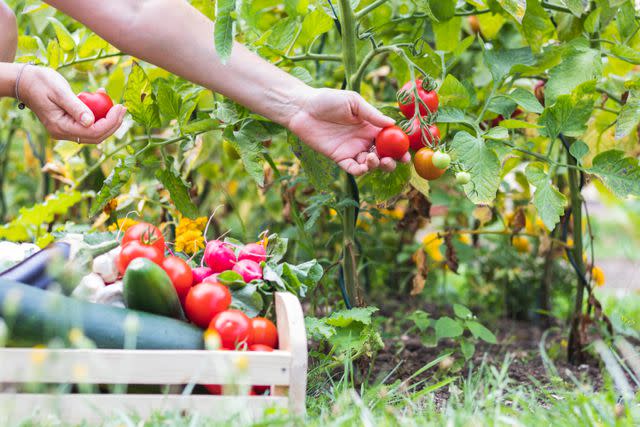
Getty Images
Keep in mind that local conditions will affect plant performance. While these crops are easy to grow, variations in soil fertility, type, and pH may impact how well a plant performs. The same is true of temperature and rainfall. If you are just starting out, consider taking a soil sample to your county extension office for analysis. Your local extension educator can help guide you in best fertilization practices to manage your soils. Pay attention to weekly rainfall, too. Vegetable crops require an inch of water each week, either through rainfall or supplemental irrigation. Except where noted, the following crops are to be direct seeded into the garden.
Green Beans
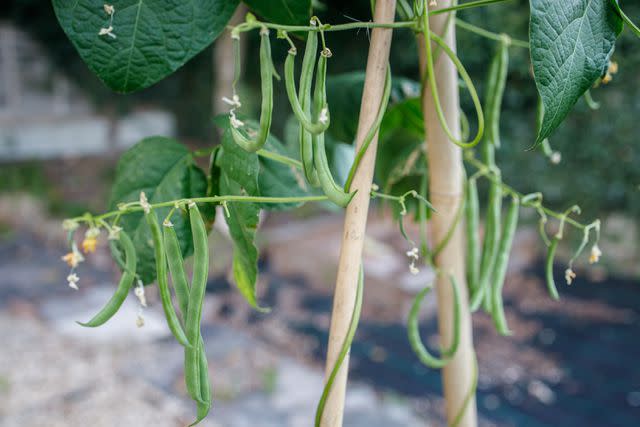
Getty Images
Botanical Name: Phaseolus vulgaris
Sun Exposure: Full
Soil Type: Well-draining, rich
Soil pH: Slightly acidic to neutral (6.0-7.0)
Also called snap beans or string beans, green beans are harvested in an immature state while the seeds are still small and the pods tender. Plants have one of two growth habits, sold as pole or bush varieties. Pole beans grow as a vine, while bush beans have a more compact, self-supporting habit. Bush beans are easier to grow because they do not require a trellis. Sow beans when the soil has warmed and the threat of frost has passed.
Lettuce
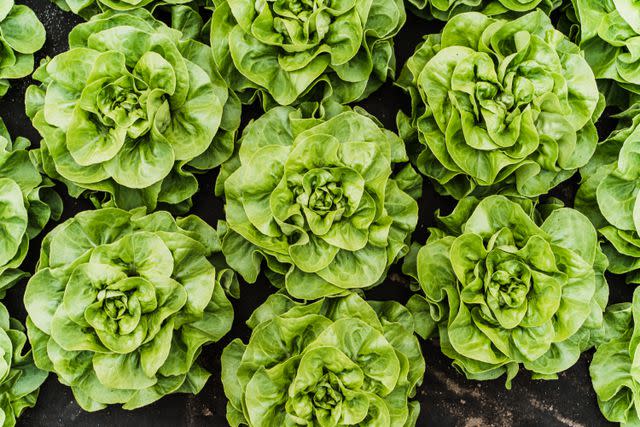
Getty Images
Botanical Name: Lactuca sativa
Sun Exposure: Full Sun to Part Shade
Soil Type: Well-draining, Rich
Soil pH: Slightly Acidic (6.0-6.5)
Lettuce is a cool-season crop, best suited for spring and fall planting throughout the South. Non-heading, loose leaf lettuces are the easiest to grow. They include red- and green-leaf varieties and are often included in leaf lettuce mixes that are also easy to grow. Look for heat-resistant varieties. Lettuce seeds require bare soil to germinate. Sow seeds every two weeks in early spring for a continual harvest.
Cherry Tomatoes
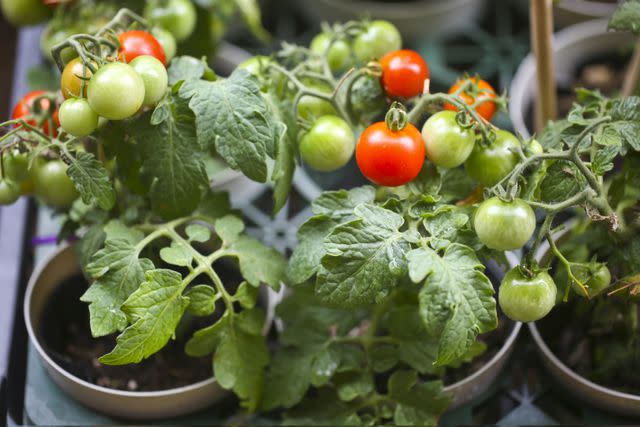
Getty Images
Botanical Name: Solanum lycopersicum
Sun Exposure: Full
Soil Type: Well-draining, Rich
Soil pH: Slightly Acidic to Neutral (6.0-7.0)
Tomatoes need plenty of sunshine and warm temperatures, making them a great crop for Southern gardens. However, they are often plagued by diseases. Small-fruited varieties, such as cherry tomatoes, tend to be less prone to the problems affecting large-fruited varieties. This is in part due to their quick growth and maturity. Cherry and grape tomatoes also produce an abundance of fruits over a long season. Look for disease-resistant and heat-tolerant varieties. You can also select compact "patio tomatoes" to grow in pots—they will need a lot less staking and almost no pruning.
Peas
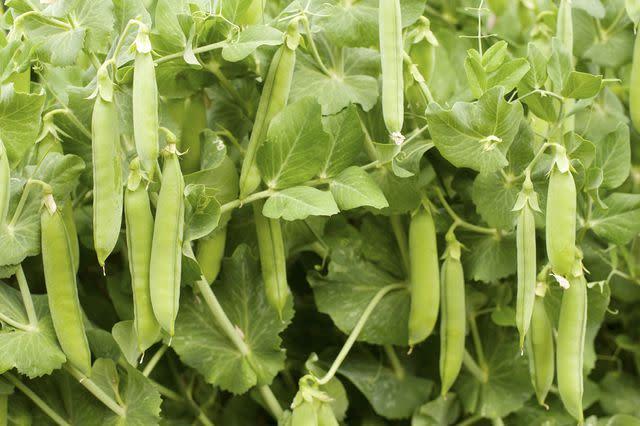
Getty Images
Botanical Name: Pisum sativum
Sun Exposure: Full
Soil Type: Well-draining, rich
Soil pH: Slightly acidic to neutral (6.0-7.5)
Peas are a cool season crop planted as soon as the soil can be worked in spring. Three main types are available. English or garden peas must be removed from their shell for eating, which makes them a little more work to enjoy. Peas with edible pods, including snow peas and sugar snap peas, are harvested at an immature stage while the pods are still tender. Peas have a vining growth habit, though some are more compact than others. They benefit from growing along a fence or trellis.
Radishes
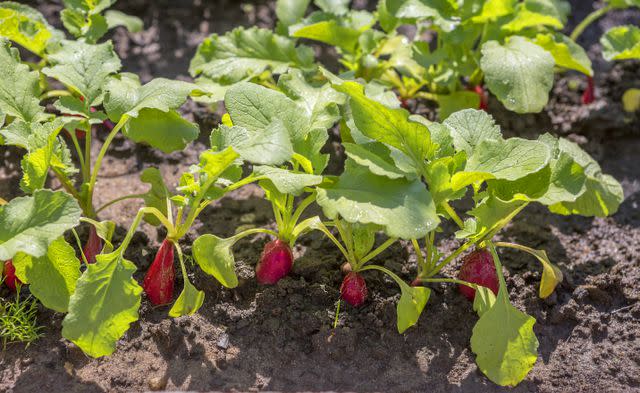
Getty Images
Botanical Name: Raphanus sativus var. radicula
Sun Exposure: Full
Soil Type: Loose, well-draining
Soil pH: Slightly acidic to neutral (6.0-7.0)
Radishes are grown in the spring and fall, along with lettuces. They grow very quickly, producing a crop in as little as three weeks. Sow seeds every seven to 10 days for a continuous supply. The flavor of radishes is associated with temperature, with cooler weather producing milder radishes. You can also snip the leafy tops when young and use them as salad greens.
Potatoes
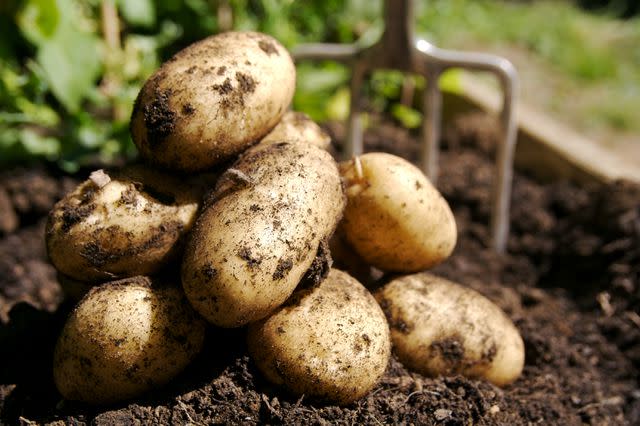
johnnyscriv/Getty Images
Botanical Name: Solanum tuberosum
Sun Exposure: Full
Soil Type: Well-draining, rich, sandy
Soil pH: Acidic (5.0-6.0)
Once they're planted, potatoes can be delightfully hands-off. Acidic, rich, well-draining soil will yield you the biggest, best-looking taters. Just plant them in raised beds or large containers if that doesn't describe your soil. You can plant seed potatoes in late winter or early spring, depending on how far south you live. Or, use ones from your kitchen that are growing eyes, as long as they weren't sprayed with growth inhibitor (farmer's market potatoes are a good candidate). For a bigger crop, you can pile up the soil around the plants as they grow.
Swiss Chard
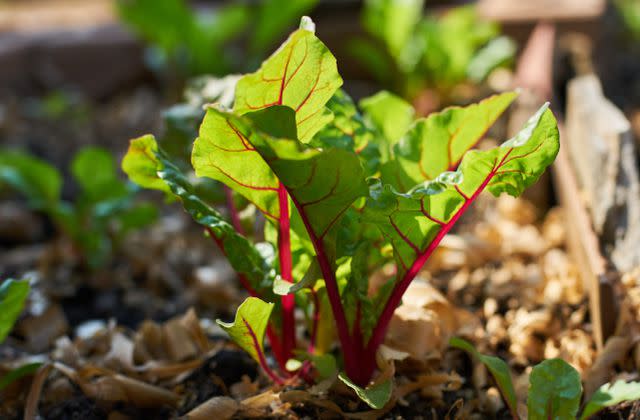
Getty Images
Botanical Name: Beta vulgaris
Sun Exposure: Full
Soil Type: Well-draining, rich
Soil pH: Slightly acidic (6.0-6.8)
Swiss chard is a beautiful crop, enjoyed as much for its colorful leaf ribs as its edible qualities. Many gardeners plant it among flowers in the fall or early spring, creating stunning color combinations. Swiss chard continues to grow new leaves after the initial harvest. It does not have the problem of bolting that many greens do, as plants are biennial and will not flower until the second year. Leaves can become bitter in the heat of summer. You can refresh plants in the fall by harvesting and discarding the bitter summer leaves to initiate new growth, or simply plant a new autumn crop.
Kale
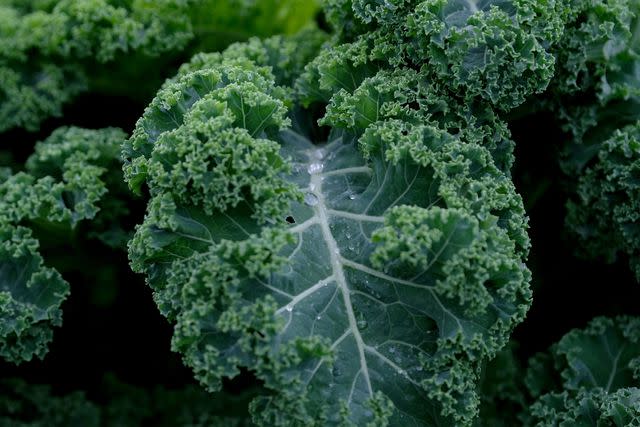
Getty Images
Botanical Name: Brassica oleracea var. acephala
Sun Exposure: Full
Soil Type: Well-draining, rich
Soil pH: Slightly acidic (5.5 to 6.8)
Kale can be grown for a spring or fall crop. In spring, it is best to plant transplants to ensure a good harvest before the heat of summer sets in. Fall crops can be grown from seed. Fall is an ideal time to grow kale in the garden, as a light frost enhances the flavor. Kale comes in a range of leaf colors and textures, with many varieties corresponding to ethnic cuisines. It also looks beautiful in mixed containers with flowers.
Beets
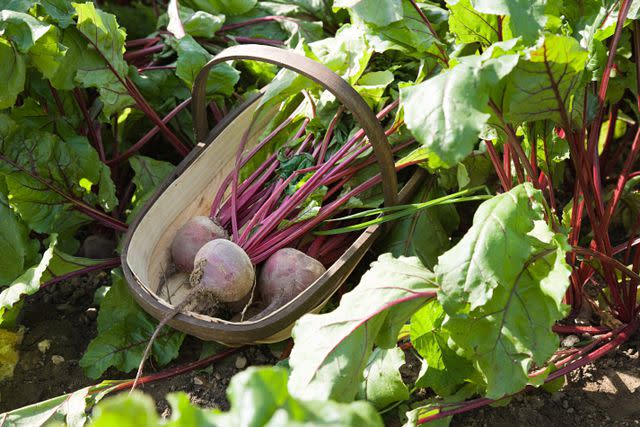
Getty Images
Botanical Name: Beta vulgaris
Sun Exposure: Full
Soil Type: Loose, well-draining
Soil pH: Neutral to slightly alkaline (6.5-8.0)
These ruby red roots are incredibly nutritious. Beets are packed with vitamins and are particularly rich in folate. When planting beet seeds, begin by raking the soil to create a smooth seed bed. Weed management is important as seedlings establish. Beet seeds are small, dried fruits containing several seeds. When plants are large enough to handle, thin plants by removing all but one plant every three inches. Plants need consistent moisture to produce a good crop.
Cucumbers
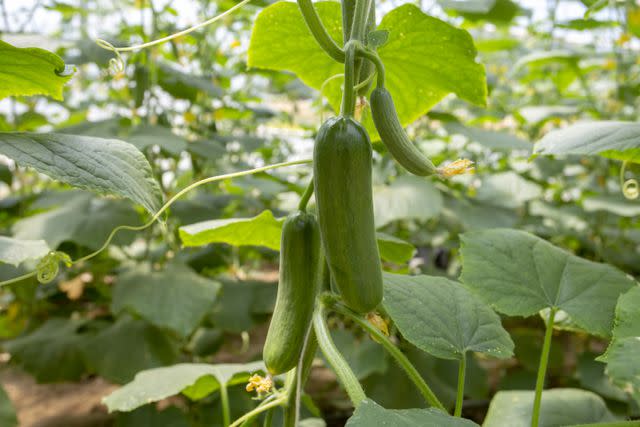
Getty Images
Botanical Name: Cucumis sativus
Sun Exposure: Full
Soil Type: Well-draining, rich
Soil pH: Slightly acidic (6.0-6.5)
Two main types of cucumbers are grown in the home garden: pickling and slicing. Pickling cucumbers are shorter and chunkier and, you guessed it, used to make pickles—though they can also be eaten fresh. Slicing cucumbers have a smoother skin and grow long and narrow. Cucumbers need plenty of sunshine and space to grow. Many gardeners prefer to grow them on a trellis to conserve limited ground space for other crops. You can also look for bush-type varieties that take up less real estate. Plant seed or transplants after the fear of frost has passed and the soils have warmed.
Jalapeños
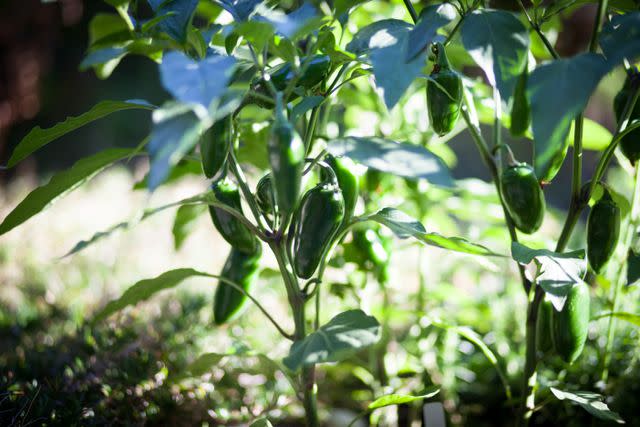
Getty Images
Botanical Name: Capsicum annuum
Sun Exposure: Full
Soil Type: Well-draining, rich
Soil pH: Slightly acidic to neutral (6.0-7.0)
These mildly spicy peppers are among the easiest pepper to grow. They are prolific producers and tend to exhibit fewer problems than bell peppers. Smaller-fruited peppers are also more tolerant of both cool and hot temperatures. Jalapeños are planted from transplants after the threat of frost has passed. Fruits can be harvested in any stage but will gain heat the longer they are allowed to mature. Once pepper plants get going, they keep producing until the first frost in fall.
Garlic
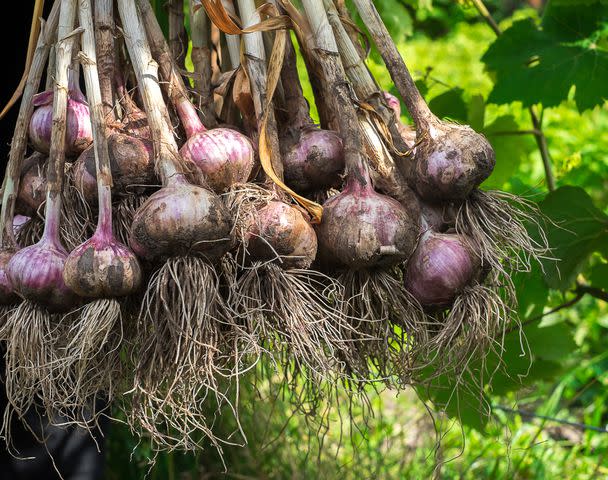
Getty Images
Botanical Name: Allium sativum
Sun Exposure: Full
Soil Type: Well-draining, rich
Soil pH: Slightly acidic to neutral (6.0-7.0)
Garlic is planted in the fall for a late spring to early summer harvest. The great thing about growing your own garlic are all the new flavors you’ll experience. Grocery stores typically carry only one or two types of garlic, but there are countless varieties ranging in color, flavor, and pungency. Garlic can be divided into two main groups: hardneck and softneck varieties. Softneck varieties have a longer storage life and tend to have a more subtle flavor than hardneck garlics. Hardneck garlic varieties produce large, easy to peel bulbs and have more dramatic and distinctive flavors.
Okra
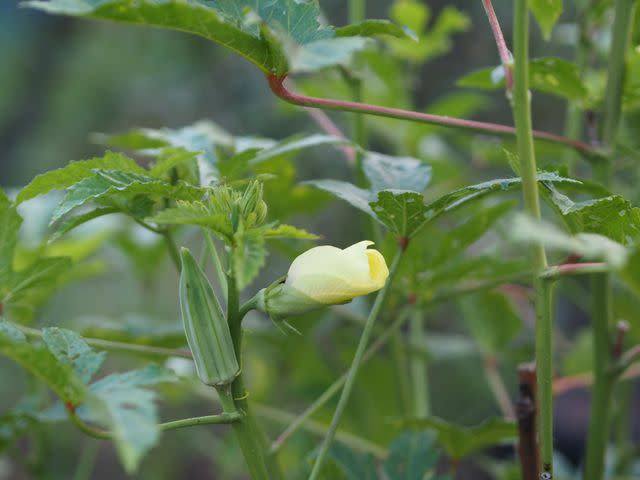
Getty Images
Botanical Name: Abelmoschus esculentus
Sun Exposure: Full
Soil Type: Well-draining, rich
Soil pH: Slightly acidic (5.8-6.5)
Not only is okra easy to grow, but it produces beautiful, hibiscus-like flowers. The most challenging part of growing okra is keeping up with the harvest. Okra loves heat. Sow seeds once soils have warmed to at least 70˚ F. You can also purchase okra transplants, but handle them gently, as their roots are sensitive to root disturbance. Once okra plants are in the ground, they are easy to care for—water only enough to keep the soil from drying out, but do not over water. Harvest pods while they are still small, about three inches long.
For more Southern Living news, make sure to sign up for our newsletter!
Read the original article on Southern Living.

